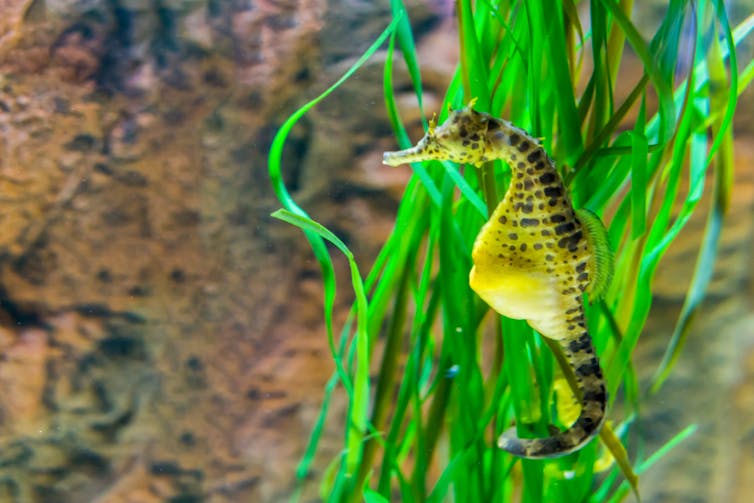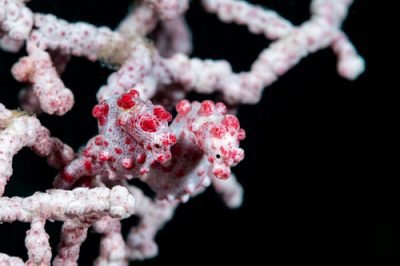
The lined or striped seahorse, Hippocampus erectus, is a captivating creature highly valued in the ornamental fish trade. However, traditionally, these seahorses have been collected from the wild, raising concerns about sustainability.
Researchers from the Marist University of Mérida (Mexico) and the National Autonomous University of Mexico have explored the potential of breeding seahorses, opening a new door for the ornamental aquaculture industry. By developing a bioeconomic model, their goal was to identify the optimal harvest time (OHT) for these seahorses within a cultivation period of over a year and a half.
Optimization of Seahorse Cultivation: A Bioeconomic Approach
Breeding seahorses in captivity can alleviate pressure on wild populations and provide a reliable source for the aquarium trade. However, cultivating these fascinating creatures is not without its challenges.
The biggest obstacle in seahorse aquaculture is the high mortality rate in their early stages. These delicate fish require specific diets and are susceptible to diseases. Researchers worldwide are actively studying optimal nutrition, water quality, and tank environments to improve juvenile survival rates.
The researchers employed a bioeconomic model to determine the ideal timeframe for harvesting seahorses in captivity. This model integrates three key aspects:
- Biological Submodel: Tracks the growth and survival rates of seahorses over time.
- Technological Submodel: Considers an area of 310 m² as a pilot commercial-scale production model.
- Economic Submodel: Analyzes the revenue generated from the sale of the cultured seahorses.
Survival is Key
The study revealed that survival rates in the early stages (first 60 days) of cultivation significantly impacted overall profitability. Unfortunately, this initial period also recorded the highest mortality rate, nearly 47%. This highlights a crucial area for improving seahorse aquaculture: minimizing deaths during this vulnerable time.
Growth and Profitability
The study employed the Von Bertalanffy growth model to represent the growth patterns of the lined seahorses H. erectus. This model proved to be statistically accurate, indicating a maximum size (L∞) of approximately 14.2 centimeters and a growth rate (k) of 0.0049 per month.
Survival rates were a crucial factor in the model. The research identified a higher survival rate (53.4%) in the first two months of cultivation (0-60 days). Interestingly, a sensitivity analysis revealed that mortality during this initial period significantly impacted overall profitability. This underscores the importance of optimizing care in the early stages to maximize the success of seahorse aquaculture.
Stay Always Informed
Join our communities to instantly receive the most important news, reports, and analysis from the aquaculture industry.
Through the bioeconomic model, the researchers identified the fourth month of cultivation as the optimal harvest time (OHT). This period coincides with the point where the model predicts the highest profit margin.
Conclusion
The model developed by the researchers predicted an OHT at the end of month 4 of production; it also demonstrated that it is possible to continue operating profitably after the OHT in a rational zone until month 8 of cultivation; however, profits are expected to decrease over time after the OHT.
Thus, cultivating lined seahorses presents a promising avenue for the ornamental aquaculture industry. Seahorse aquaculture can become a sustainable and profitable practice by employing bioeconomic models to identify optimal harvest times and addressing critical factors like early-stage survival. This approach has the potential to meet the demand for these captivating creatures while protecting wild populations.
While the study demonstrates the potential profitability of breeding seahorses in captivity, challenges remain. Reducing the high mortality in the early stages is essential. Further research and refinement of breeding techniques are needed to optimize this process.
Contact
Miguel A. Vela Magaña
Unidad Experimental Marista UNEXMAR, Universidad Marista de Mérida
Periférico Norte Tablaje Catastral 13941, Carretera Mérida-Progreso, C.P. 97300 Mérida, Yucatán, México.
Email: mvela@marista.edu.mx
Reference (open access)
Sánchez-Becerril, O., Seijo Gutiérrez, J. C., Vela Magaña, M. A., Mascaró, M., & Simões, N. Bioeconomics of juvenile seahorse (Hippocampus erectus) culture: Optimal harvest time. Journal of the World Aquaculture Society, e13076. https://doi.org/10.1111/jwas.13076
Editor at the digital magazine AquaHoy. He holds a degree in Aquaculture Biology from the National University of Santa (UNS) and a Master’s degree in Science and Innovation Management from the Polytechnic University of Valencia, with postgraduate diplomas in Business Innovation and Innovation Management. He possesses extensive experience in the aquaculture and fisheries sector, having led the Fisheries Innovation Unit of the National Program for Innovation in Fisheries and Aquaculture (PNIPA). He has served as a senior consultant in technology watch, an innovation project formulator and advisor, and a lecturer at UNS. He is a member of the Peruvian College of Biologists and was recognized by the World Aquaculture Society (WAS) in 2016 for his contribution to aquaculture.




